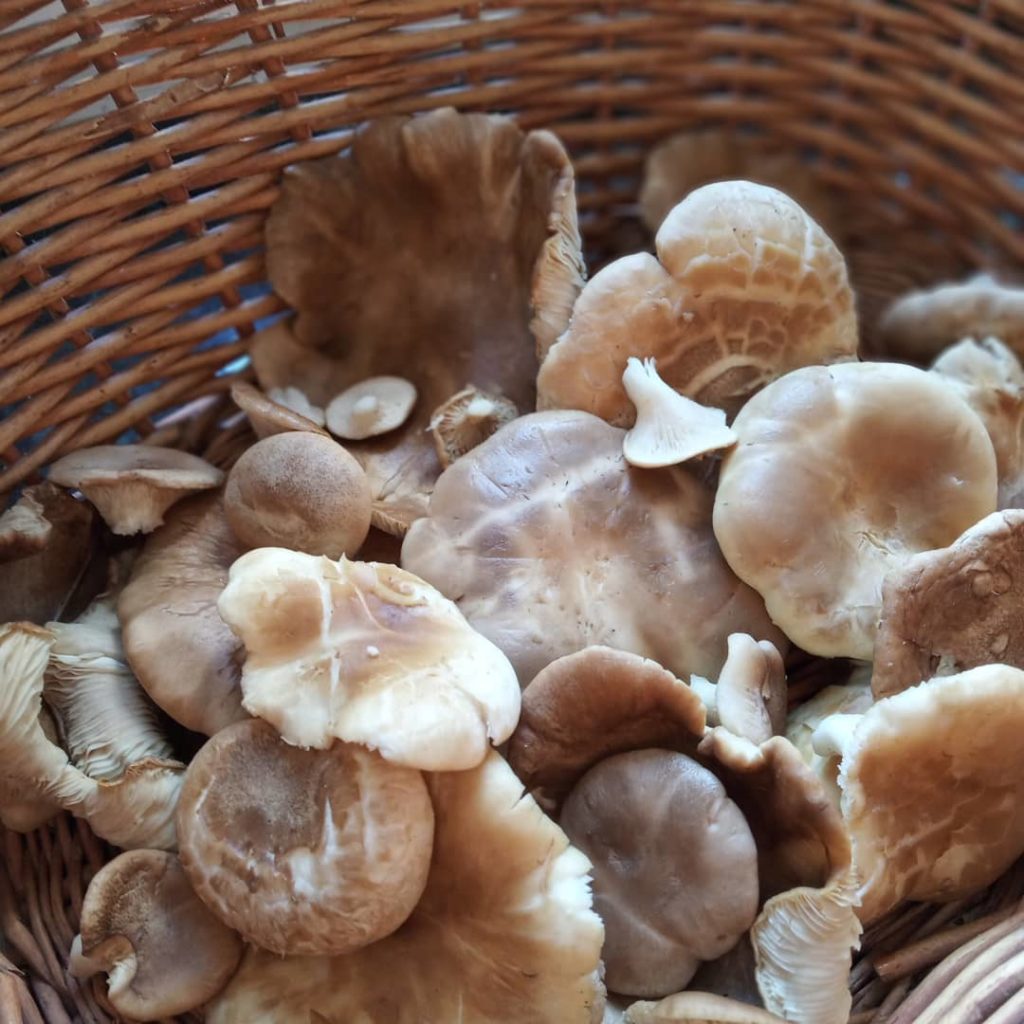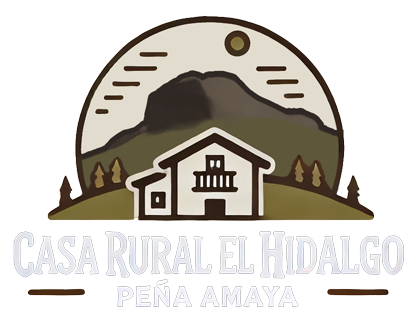
Thistle mushrooms
In September, with the first rains, mushrooms and fungi awaken and the desire to go out to the field to collect them.
It’s the excuse we’ve been looking for to get out in the country, take a slow walk, reconnect and recharge our batteries.
From the rural house El Hidalgo you can go out walking to look for them in the surroundings.
We leave you in this post some indications to enjoy mushrooms and fungi gathering.
What we need to bring.
Comfortable clothes, good shoes, and a wicker basket for mushrooms. It is important that whenever you go to the mountain to collect mushrooms you always carry your basket. You will be complying with the mushroom picking regulations.
Another essential item you need to go mushroom hunting is a knife. It is not allowed to pluck them.
2. What mushrooms we will find.
The first rains make many of us go out to the forests and moors of our country to collect the first mushrooms of the season.
In autumn, in the surroundings of our country house, in Peña Amaya, we find, among many other species, oyster mushrooms, blue trunk mushrooms, chanterelle mushrooms, chanterelles in the pine forests, mushrooms in moors and meadows.
In spring, the tasty perrochico is the star of the mushrooms in May.
The most important thing is to know how to recognize mushrooms.
A good guide to the area, such as this one, is recommended:
LMUSHROOMS IN THE FIELDS OF AMAYA AND VILLADIEGO. By the Cultural Association “Los Cañamares”.
Extraordinary book, didactic and exquisite.

Didactic because it teaches us the enormous variety of mushrooms that we can find in our area, which is divided into three parts: the countryside, the moors and the mountains. It then provides some general information about mushrooms: their reproduction, their parts, their habitat, their names and their usefulness.
In the third part, he delves into the types of mushrooms according to their habitat. He divides this into six classes: meadows and pastures, the riverside forest, the holm oak forest, the pine forest, the oak forest and the beech forest. For each zone he gives a detailed description, including a photograph, of the type of mushroom, its formal characteristics, the most favorable season, edibility, etc.
In short, a great guide for mushroom lovers and for those who want to enter this world.
But it doesn’t end there… At the end of the book, the result of all the years of exhibitions and preparation, there is a small recipe booklet that explains the different dishes that can be cooked with this fruit of the field. Before that, there is some advice on how to harvest, clean and preserve them. The recipe is accompanied by a photograph that opens the palate. Do not miss it.
We also provide a link to one of the most complete websites on mycology due to the number of species described and the quality of its photographs.
3. How we are going to cut the mushrooms.
The optimal time to collect mushrooms is when the top of the cap of the mushroom begins to crack, before it opens and the spores fall.
The cut should be horizontal and as close to the ground as possible. As far as possible, the blade of the knife should be kept off the ground to protect the mycelium from the action of the sun, light and wind.
4. How to clean mushrooms
Before any type of preparation we must clean the mushrooms well. As a general rule, it is not advisable to wet the mushrooms excessively, since they lose their aromas and absorb a lot of water, which they will release during cooking, spoiling the dish.
Instead, we will use a knife to cut the base of the trunk and scrape off the adhering soil, a brush to remove the remains of soil and a damp cloth to finish. If it is nevertheless essential to use the water jet, we will try to dry them as soon as possible. Once we have talked about their cleaning, we will review some tips on how to cook mushrooms.
5. How to cook mushrooms.
Mushrooms can be cooked sautéed, grilled, in stews, risottos. There are other recipes for slow-cooked mushrooms, baked au gratin, tempura or even raw, accompanied by vinaigrette.
Although some preparations, such as sautéing, are suitable for all mushrooms, the best way to choose how to cook mushrooms is to know the properties of each one. Some have pigments that stain the rest of the ingredients of the dish, others lose a lot of water when cooked, others hardly see their structure modified and others give off all their aroma and splendor when cooked slowly.
Mushrooms and mushrooms, for example, are very good sautéed whole and over high heat, to prevent them from losing too much water. The chanterelles bring out the best of themselves when they are grilled or broiled. The trumpets have an intense and interesting flavor but need to be cooked well, we usually find them in rice and stews, although because they are easy to dehydrate, they are also ideal for making mushroom flour. Goat’s foot, due to its higher chitin content, withstands long cooking without losing its consistency. Chanterelles are an excellent ingredient for scrambled eggs or for a crunchy tempura.
Pan fried mushrooms
Cooking mushrooms with garlic is one of the star preparations. Here are some tips for a good sautéed mushrooms:
- You must prevent the mushrooms from releasing excess water and boiling in their own liquid. To do this, cook the garlic mushrooms in small quantities and always start with high heat, to “seal”.
- The best for sautéing is to brush the mushrooms with oil.
- If you can, cook the mushrooms whole to enhance their flavor and texture.
- Start cooking the mushrooms cap side down and unseasoned.
- Add salt when you turn them over, this is the moment when they start to release their juices.
- The dressing is fundamental. You can prepare, for example, a tasty dressing in a mortar, with oil, garlic, parsley and salt. You can also add white wine, vinegar or lemon for a more aromatic dressing. Add the dressing at the end of cooking.
- You can also prepare grilled mushrooms. Another ideal way to savor them.



